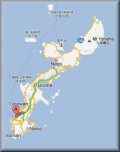Types of Handheld UHF Radios
Introduction
UHF radios cover the frequency range from 300 MHz to 3,000 MHz/3GHz. The radio waves are between one meter and one tenth of a meter long.
UHF radios are used in a wide array of applications, such as keeping logistics in touch with truckers, relaying instructions from air traffic control to pilots, coordinating work between teams on site and in ship to shore communications.
UHF radios can be classified based on frequency bands they operate on. UHF radios can also be classified as either analog or digital.

Single Channel Radios
Single channel radios is also called single band radios. Single channel radios are commonly used as walkie-talkies. Single band UHF radios will typically work on either the 400-470 MHz or 800-960 MHz frequency band, but not both.
Dual Channel Radios
Dual channel radios can also be called dual band radios. Dual band UHF radios cost less than more advanced units. Dual channel radios are not limited to one specific frequency; that can be altered by the operator. Dual band radios can work on more than one frequency band, such as in the 800-960 MHz band or 400-470 MHz range.
Dual band can also refer to radios that can send and receive on both UHF and VHF bands. These are commonly used in avionics and traffic control.

Multi Channel UHF Radios
Multi-channel UHF radios are also called multi-band radios and multi-mode radios. According to “Ham Radio For Dummies” by H. Ward Silver, multi-mode radios VHF/UHF operate in single side band (SSB), carrier wave (CW) and frequency modulation (FM). Carrier wave is used to carry Morse Code signals. SSB connects to the public switched telecommunication network.
Multi-channel radios have at least two channels and typically four channels. You can get UHF radios with as many as 16 channels. Each channel can act as a private conference line, where only those on that channel hear each other without interfering with those on other channels.
Multi-channel radios can be set up to have one channel to communicate with work crews at one site, a second channel for the central office and a third channel to talk to the construction foreman. Whoever listens to that channel hears the request, but those not on the channel do not hear it. For example, Glenn Corbett’s book points out that police officers dispatched to a crime scene should switch to a separate channel for officers at that site so that their conversation about finding suspects doesn’t interfere with the instructions to other officers still on the beat.
All Mode Radios
“Ham Radio For Dummies” by H. Ward Silver states that many UHF all mode radios have full duplex operation and automatic compensation for transponder offsets. This makes it possible for them to be used when talking to amateur radio satellites. All mode radios can be used to communicate on the microwave frequencies, though a transverter is necessary.
Analog UHF Radios
Analog radios were the original UHF radios. They’ve fallen out of favor because it is hard for communications on analog radios to be private unless in code.
One method of improving the security of analog radio conversations is to regularly switch radio channels. Anyone listening in then loses the conversation when the group changes to the pre-determined, designated frequency at once. Analog radios can still have many programmable channels and pre-programmed channels.
Digital UHF Radios
Software defined UHF radios are by definition digital radios. Digital radios are easily digitally encrypted by the digital signal processor that is at the heart of the design.
Digital UHF radios used to cost more than analog radios, but the cost has been declining for years. Digital UHF radios have greater spectrum efficiency, using a narrower range of frequencies so that more users can share the same frequency range.
The next generation of digital UHF radios in use is software defined radio (SDR). These are digital radios that use software to control multiple components, allowing them to cover many different frequency ranges.








